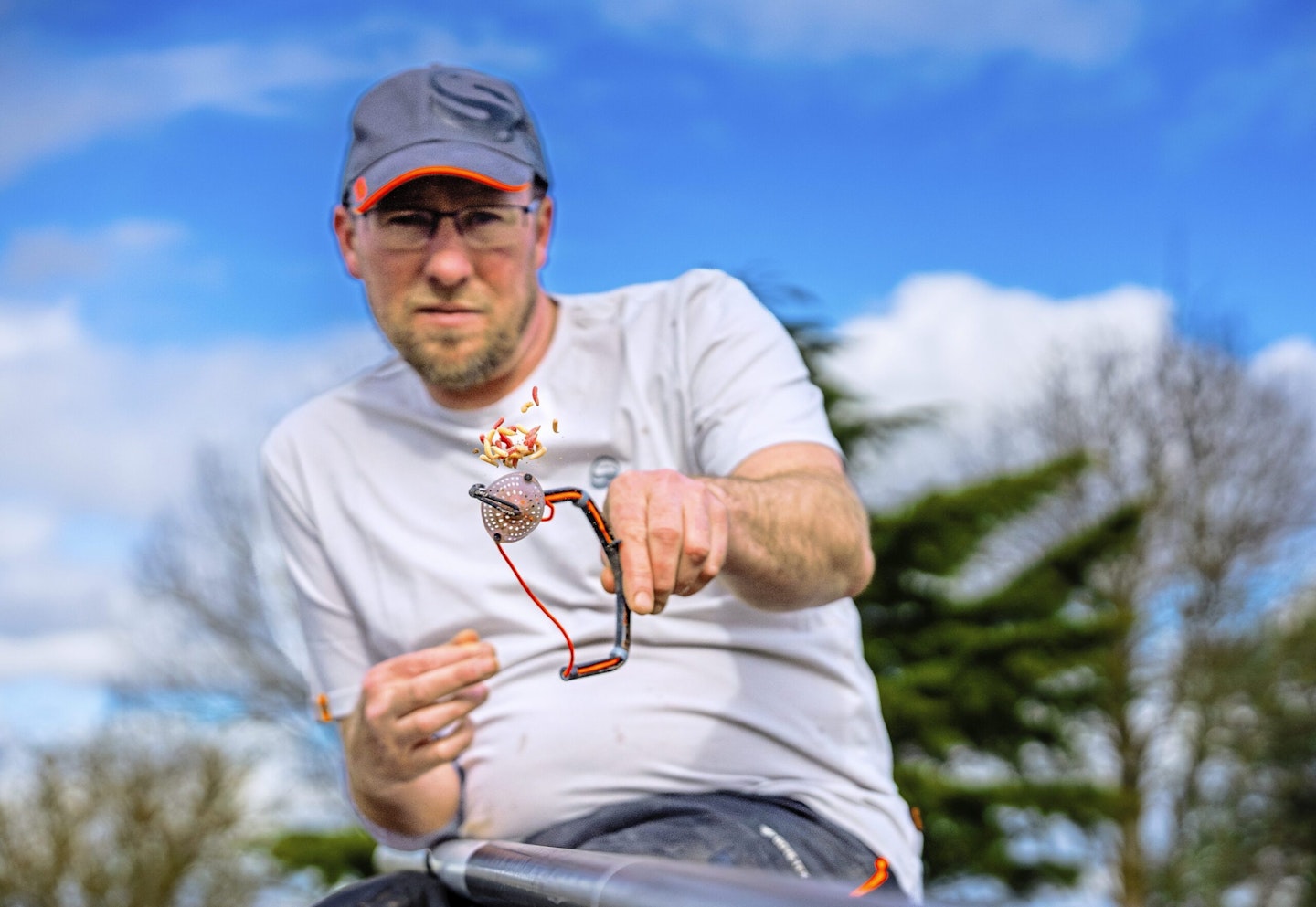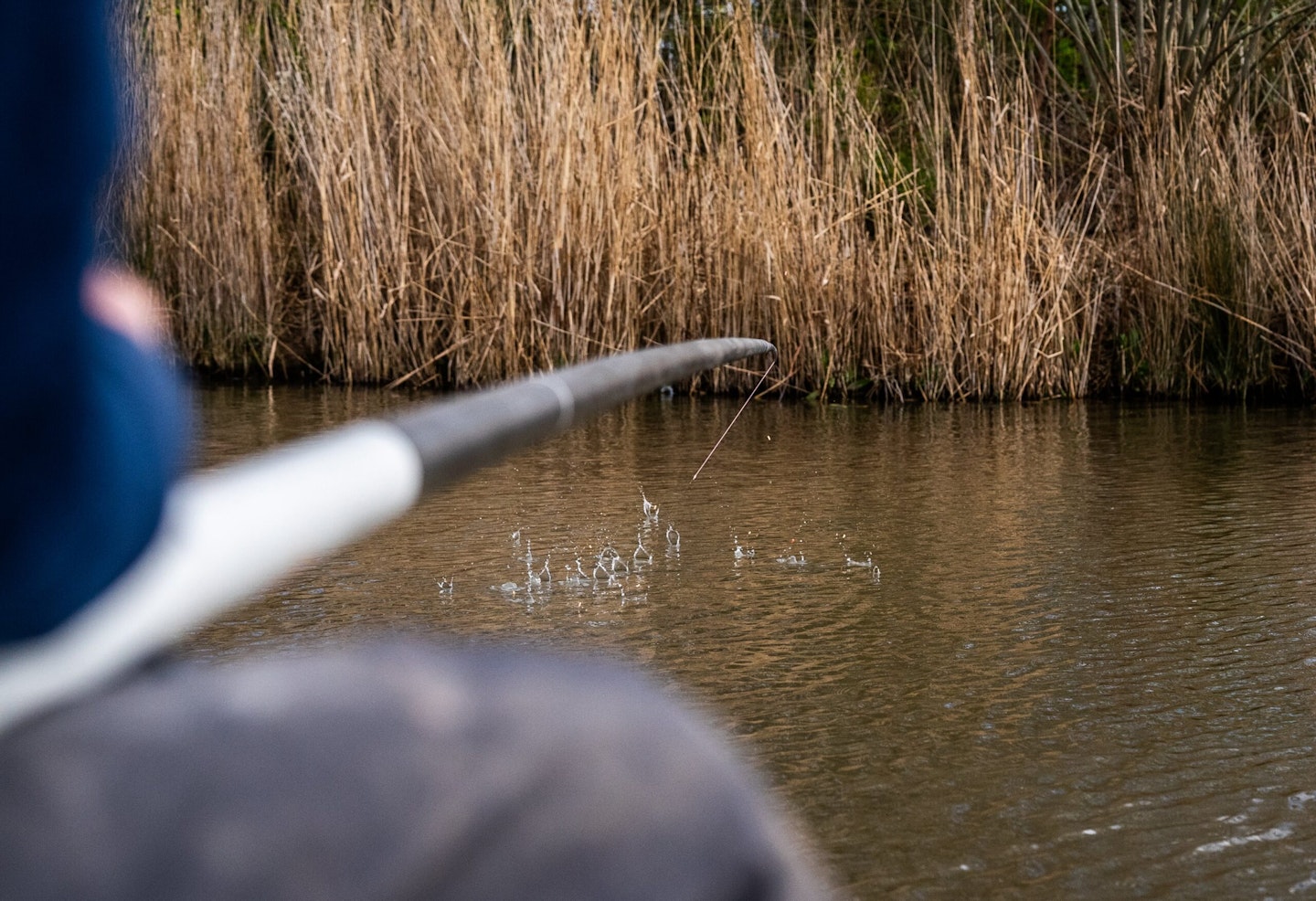There are some tactics that you simply can’t do without as a commercial fishery angler, and I’m going to reveal some methods that are vital to learn if you want to enjoy highly productive sessions.
I’m kicking off with one of my favourites, and that’s using maggots and casters shallow on the pole to put together big netfuls of F1s. Both these baits often outscore pellets at this time of year, and with the fish hungry after months of eating very little, it doesn’t take much encouragement for them to come within inches of the surface to compete for the feed.
Stick to a few golden rules when fishing shallow and you’ll unlock your swim’s full potential in next to no time.
Rotate your rigs
F1s rarely sit at the same depth all day and will go up and down in the water column. You may think that fishing just a few inches too deep or too shallow doesn’t matter, but you’ll be amazed just how much the sport can slow if you haven’t got the depth spot-on.
Lots of line bites or foul hooking is a sign that you need to shallow up a few inches, while it’s time to go deeper if you aren’t getting bites or indications at all. I use a 0.1g dibber for anything up to 16ins deep, before switching to a 0.15g bristled slimline float with a carbon stem for up to 2ft. If you’re fishing a deeper venue and need to go further down the water column, it is time to use a jigga set-up.
I tend to use 0.17mm mainline to either a 3ins (up to 16ins deep) or 4ins hooklength of 0.13mm and a size 16 Guru SLWG hook. Aim to keep the length of line between pole tip and float as short as possible as this will increase the number of bites you hit.
There will be days when the fish will back away from the tip though, and switching to a 1ft- 2ft lash can be better, although you must always maintain tension within it. The stamp will dictate the best elastic to use, but white Daiwa Hydrolastic is a good starting point when catching fish in the 1lb-3lb bracket.
SELECTING THE RIGHT ELASTIC IS CRUCIAL, CHECK OUT OUR HELPFUL GUIDE TO MAKE THE RIGHT CHOICE.

Bring the noise
Feeding makes noise that the fish find attractive, but working your rig can also create a little commotion.
A hookbait that is sat static among freefalling freebies will look unnatural and is likely to be ignored, especially by the bigger stamp F1s. Slapping the rig in works particularly well when targeting the top 1ft-2ft of the water column. Tapping the water with your pole tip can also score at waters where it is permitted.
There may be periods where the fish wise up to the noise you’re making and switching to lifting and dropping the rig in quietly can work when this happens.
THE BEST FISHING POLES WILL HELP YOU FISH SHALLOW ACCURATELY AND HIT MORE BITES!

Focus on one area
Shallow fishing isn’t a tactic where you want multiple lines on the go, as it will split the shoal and lead to fewer bites. The type of venue that I’m fishing dictates where I pencil in my single swim. On snakes or canals it’s down the middle in the deepest water, while on open water lakes I’ll concentrate on an area 13m-14.5m from the bank.
Once fish are off the bottom, they become more skittish, and having a decent separation from where you are sat to where you are fishing is important for settling a shoal.
SIT COMFORTABLY WHEN FISHING THE LONG POLE WITH ONE OF THE BEST FISHING SEATBOXES!

Prime the line
F1s need time to settle when they are feeding shallow. Clattering them from the off will spook the shoal and hamper your chances of the line becoming effective later in the day.
So, fish another line well away from your shallow line for the first 40 minutes to an hour of the session, but aim to pick up the catapult at least every minute and spray some bait over the top. Once you have a go on the line, increase the number of times you feed, aiming to use the catapult every 30 seconds.
I’ll feed 20-30 casters each time in open water lakes as they make a little more noise that draws fish in, and 15-20 maggots each time on snake lakes where the fish are already likely to be nearby.
When it comes to hookbaits, I’ll match what I am feeding and like to band them. This leaves all the hook on show to give you a better chance of a solid hookhold when they take it.
IF YOU NEED MORE ADVICE ON COMMERCIAL SHALLOW FISHING, JAMIE HUGHES IS HERE TO HELP!

